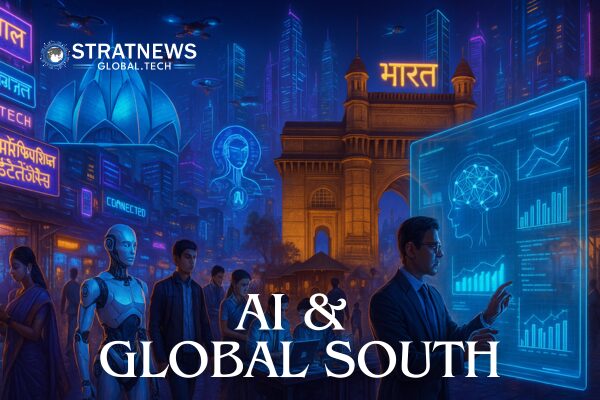In April 2025, speaking at the Carnegie India Global Technology Summit in New Delhi, S. Krishnan, Secretary to the Ministry of Electronics and Information Technology (MeitY) characterised developments in AI as a Y2K (year 2000) moment for the Indian IT industry. The Secretary also highlighted the potential for India to assume a leadership position in the Global South.
I argue that the AI race is not a Y2K moment for India. There are fundamental differences between the Y2K moment of yore and the ongoing AI saga. That said, India can still emerge as a leader in the Global South if it prioritises the development of open software and hardware associated with AI.
What is Y2K?
Y2K stands for the year 2000, and it refers to the widespread fear at the eve of the 21st century that computers would crash when the clocks turn from 31 December 1999 to 1 January 2000. Due to limited storage and processing capacities of computers developed in the 1960s through 1980s, developers left out ‘19’ and only coded the last two digits of the year. But a simple-sounding concern in the 1980s swelled into a global fear of chaos in the 1990s: would the computers be able to distinguish between 1900 and 2000 because many legacy systems in use then were only coded for the last two digits? It was expected that banks, transportation (including air), and power production would be severely affected.
Big corporations that were not primarily dealing with computers also worried about disruptions to their global operations. What made the crisis worse was a realisation that even if some companies addressed the Y2K issue in their code, the interlinkages of systems could still have caused cascading failures. This fear motivated companies, especially in the West, to spend billions of dollars and hire the services of programmers who could manually fix their codes. This created huge demand for Indian programmers. The Y2K issue ended up acting as a launchpad for the then emerging Indian IT industry. According to a Nasscom estimate quoted by Nagesh Kumar in a 2001 Economic and Political Weekly paper, Indian companies earned about USD 2.5 billion from Y2K projects during 1996-1999 period.
How the AI race is different
In the case of Y2K, the West (primarily, the US) sought Indian software engineers while in the case of the AI race it is actively restricting AI tech flow to India. During the final days of his presidency, Biden had issued rules for AI diffusion that divided the world into three tiers. Tier 1 countries enjoyed unfettered access to AI technology and included 18 close allies such as Australia, Belgium and Canada. Tier 3 countries such as China, Russia and Afghanistan on the other hand faced the most stringent restrictions. India along with the majority of the developing world was placed in tier 2 involving some restrictions in accessing the cutting-edge AI chips. The first few months of Trump 2.0 have only shown signs that the battle for supremacy in AI is only set to intensify.
While AI adds value to a myriad of industries and may create some new types of jobs, it will likely disrupt the employment sector in India. Y2K, on the other hand, ignited a chain reaction that ultimately created hundreds of thousands of jobs for engineers in India.
Another difference between the Y2K moment and today is the shifting sands on immigration in the West. Indians software engineers took advantage of the relatively lax borders in the West to migrate in hordes in the 1990s through 2010s. Indian tech talent not just contributed immensely to their host economies, but also sent billions of dollars in remittances back to India. With a surge of anti-immigration stance in the US as well as Europe, the Indian AI engineers (especially those in the low-to-medium spectrum of talent) may find it difficult to migrate.
India Becoming the leader for the Global South
Although the recently approved INR 10300 crore IndiaAI Mission is a step in the right direction, it is inadequate in catapulting India to lead the global AI race — the investment required in terms of capital, human resources and education is in orders of magnitude higher than what is being done at the present. That said, India can still emerge as a leader for the Global South in the AI domain if the country prioritises the development and uptake of open AI hardware and software in the developing world. India has already demonstrated success with its digital public infrastructure export model and the country can recreate this success in the AI domain too. This is because developing countries caught in the cross-fire of US-China AI rivalry would benefit from access to open hardware and software that is not subject to a hegemon’s export controls. India can only seize the AI moment if it understands what it is and what it is not.


